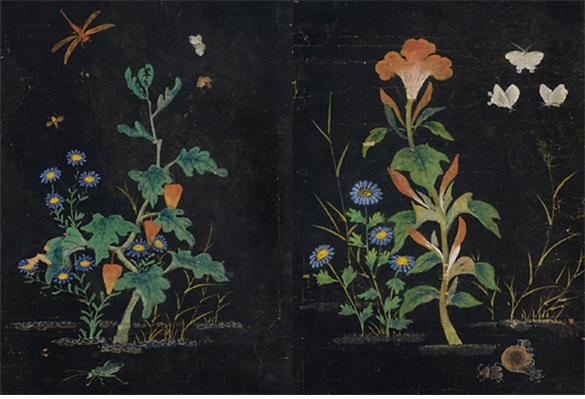
Imagine having a world of talent in your just the tip of your finger — calligraphy, writing, painting, and every form of fine-art under the sun. One of the figures in Korean history that is a perfect representation of this description is Shin Saimdang.
Today, many know Shin Saimdang simply as the mother of the famed Confucian scholar, Yulgok. However, more than being a model of moral and ethics, and her accomplishments of being a mother, her literary and artistic achievements speak louder volumes.
Looking back at history, during the early 1500s, Shin Saimdang was considered one of the most well-renowned, refined, and masterful painters of her time. In addition to that, being the second daughter of scholar Shin Myeong Hwa and living in a household absent of other male figures, she had also grown to be proficient in calligraphy and had an adept understanding of Confucian scriptures that rivaled many educated nobles. In short, Shin Saimdang was the epitome of a prodigy, and was a genius in every aspect a human being could have been. As such, her father greatly supported her every endeavor. Had it not been for the male-dominated Joseon society that was based in Confucian values, Shin Saimdang would have flourished as much as the subjects of her paintings.
The most renowned of Shin Saimdang’s are from her collection Chochungdo and another painting by the name of Mukrando. Shin Saimdang’s collection Chochungdo, as the name suggests, consists of colorful paintings that revolve around the subjects of plants and insects. Mukrando on the other hand, is a piece that revolves around the subject of orchids which are a contrast to Chochungdo, being a form of literary painting that utilizes black ink. It is said that the reason for flowers, birds, and animals being the main subject of many paintings during this time is that these subjects were symbolic for wealth, success, longevity, and offspring.
One of the first thoughts that many people may have is that any skilled artist would be capable of replicating nature through art. However, the reason that Shin Saimdang’s works stands out from the rest is because, to many people during her time and even people to this day, the paintings seem to breathe a lifelike energy and are extremely realistic yet are distinct, and aesthetically pleasing. Shin Saimdang’s understanding of seasons are reflected in her paintings. For that reason, her paintings do not seem like mere paintings, but are moreso like snapshots of her waking life. Not only that, but each of her paintings have symbolic reasons. For example, in one of the paintings of Chochungdo, she paints a cockscomb along with three butterflies dung beetles, which together are symbolic for marital harmony and a successful career in government. In short, her paintings told beautiful stories.
These paintings have inspired many artists after her time, and in January of 2017, 14 artworks from Shin Saimdang’s Chongchungdo and Mukrando were displayed in “Shin Saimdang, Her Garden” — an exhibition dedicated specifically for Shin Saimdang’s works. That same year, SBS had even released a drama called Saimdang, Memoir of Colors, which was based on the life of Shin Saimdang and the stories behind her paintings and literary works.
While the exhibition has long been completed, oversees arts enthusiasts can observe the paintings in virtual exhibitions hosted by Google Arts & Culture. To those who are more open to traveling and learning the history of, Shin Saimdang’s herself, her birthplace Ohjukheon in Gangneung hosts tours for visitors!
Written by: Romeo Celes Jr.
Originally from Waipahu, Hawaii, Current 5th year university student, Candidate for a Bachelor of Arts in Korean Language Flagship, Molecular & Cell Biology, and minor in Music at the University of Hawai’i at Mānoa, Exchange student at Korea University and Intern at VANK (Voluntary Agency Network of Korea)”